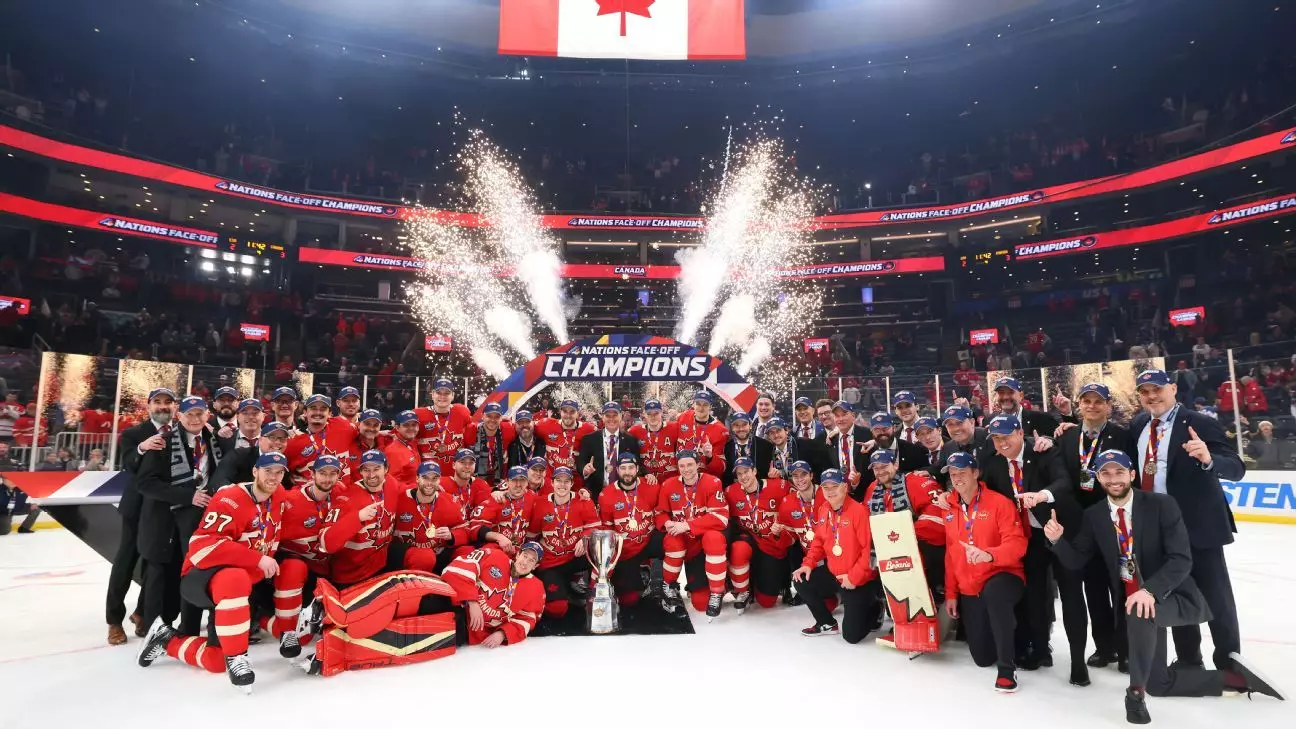The National Hockey League (NHL) is poised at the brink of a monumental transformation in how it presents its annual All-Star showcase. This leap into new territory was bolstered by the resounding success of the recent 4 Nations Face-Off, which replaced the more conventional All-Star Game and drew significant acclaim. The shift signifies a radical departure from monotonous formats to one that encapsulates the spirit of competition among the sport’s elite. As the NHL gears up for the upcoming event in February 2026— to be hosted by the New York Islanders at UBS Arena—expectations are running high. In a recent statement, NHL Commissioner Gary Bettman emphasized the urgent need to “reevaluate how we want to do things,” underlining the bar that has been set at an unprecedented level.
This pivot isn’t just about shaking things up; it is a necessary evolution in a league that thrives on the energy, talent, and charisma of its players. The 4 Nations tournament represents the NHL’s first significant foray into a best-on-best international competition since the World Cup in 2016. Featuring luminaries like Connor McDavid and showcasing the explosive talent of teams from Canada, the United States, Sweden, and Finland, the event reminded fans and analysts alike of what is possible when the league leans into competitive structures that resonate with hockey’s global audience.
Aftermath of the 4 Nations Success
The enthusiastic reception of the 4 Nations event has ignited discussions about future formats for the NHL All-Star Game. Bettman’s comments reflect a growing realization that the audience has a thirst for more than just an exhibition of talent; they desire an experience that resonates deeply with competitive sports and international pride. The tournament’s success indicates a clear divergence from the past—where exhibition games felt more like a sideshow than serious contests—toward an era that celebrates genuine competition and international camaraderie.
Interestingly, the league’s previous decision to skip Olympic participation in both 2018 and 2022 because of pandemic-related interests and conflicts only amplifies the significance of re-engaging in a global context for the 2026 Milano-Cortina Games. The hope is that NHL players will once again take the international stage, a move Bettman confirmed is already in discussions with the International Ice Hockey Federation (IIHF).
Formulating Future Directions
The league’s ongoing deliberations are crucial, especially as Bettman mentioned that “everything is on the table.” These developments come at a pivotal time as larger discussions are set to unfold concerning collective bargaining with the players’ association. Expected to commence in April 2024, discussions around the current collective bargaining agreement, which is due to expire in 2026, could include new areas such as junior hockey and college eligibility rules. These are key issues that directly affect the future landscape of professional hockey and the pathways available to budding talent.
As conversations unfold, the need for collaboration and understanding between the league and the players’ association will be vital. Bettman’s cautious optimism suggests that major hurdles are not anticipated, highlighting that the focus will likely be on logistical and operational aspects rather than ideological differences.
Examining the All-Star Game’s Future
While the trades and team strategies often dominate ESPN updates, the direction of the All-Star Game is just as pertinent. With Bettman stating he’s happy with the existing playoff format, it begs the question of whether the same rigidity will apply to the All-Star Game formats going forward. The novelty of the upcoming event seems set to counterbalance the familiarity of past structures, but will this innovation last? A properly executed All-Star showcase could reinvigorate interest, but it remains to be seen if the league is committed to continual evolution.
The recent discussions have led the NHL to explore novel ideas in the wake of the decentralized draft format initiated recently, indicating an openness to experimentation. The decision to have one representative from each team in a centralized location while the others remain in their home cities could serve as an indicator of how much the NHL is willing to adapt.
That said, Bettman’s comments reveal the necessity of hastily implementing changes based on audience and player feedback. A collective movement toward innovation must be coupled with the right measurements of success; if teams find merit in a decentralized approach, its future may be determined by the enthusiasm of stakeholders both on and off the ice.
As the NHL edges closer to this new chapter, the enthusiasm surrounding it suggests it could become a pivotal moment in shaping the sport’s popularity in North America and beyond. There’s a growing urge among fans and professionals alike to witness an All-Star event that doesn’t simply function as a diversion but rather serves as a testament to the talent and passion embodying the game of hockey.

